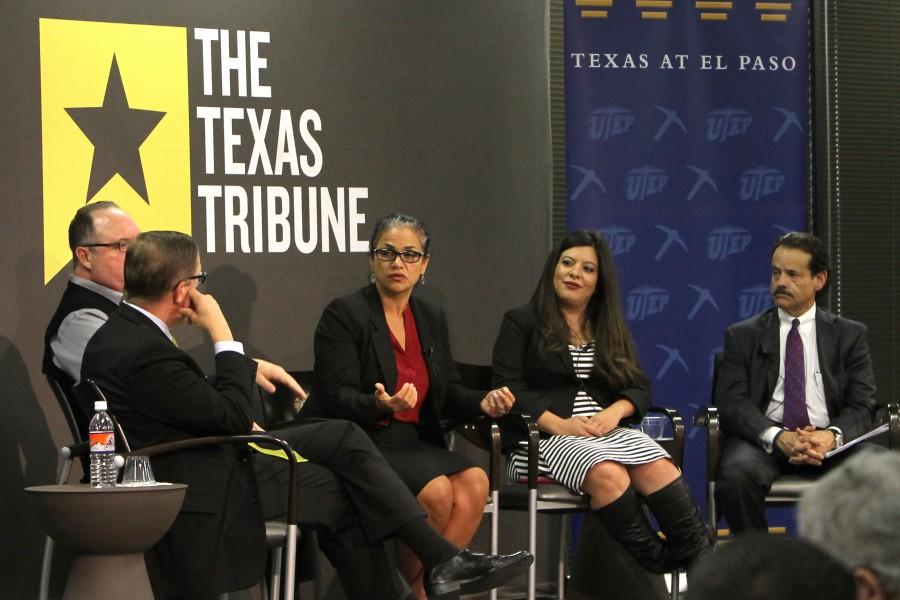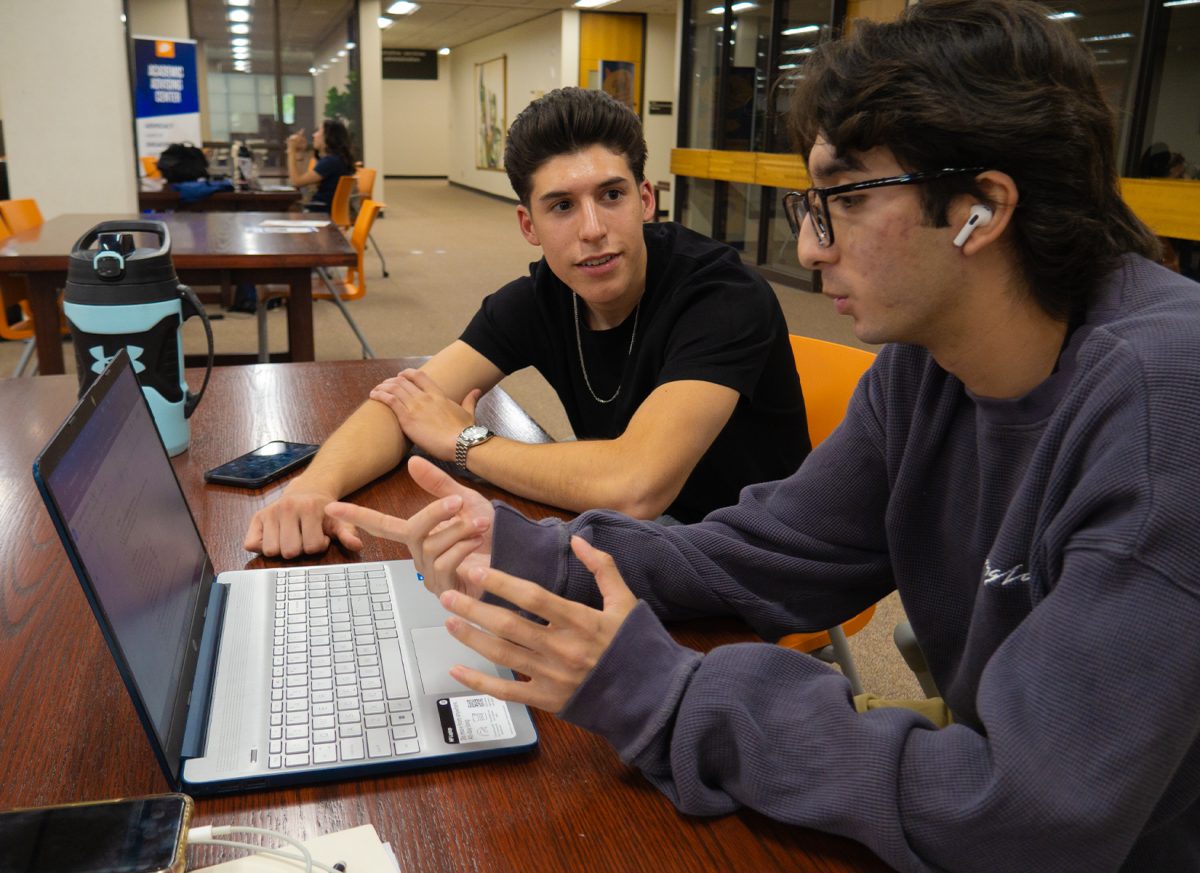The Texas Tribune, a non-partisan news organization, hosted “Public Education: The Next Five Years,” the seventh installment of special statewide series at UTEP on Friday, Nov. 13.
Panelists included State Rep. Mary Gonzalez, D-Clint., Chief Deputy Commissioner of the Texas Education Agency Lizzette González-Reynolds, Juan Cabrera, superintendent of the El Paso Independent School District, and Eduardo Rodriguez, interim executive director of the Council on Regional Economic Expansion and Educational Development.
Two of the main topics discussed during the forum were school finance and assessment.
The event was moderated by CEO of the Texas Tribune, Evan Smith, who began by asking Cabrera about the school finance lawsuit pending with the Texas Supreme Court. The lawsuit was filed by more than 600 school districts because they argue the state is not providing adequate funding. The suit was filed after the state legislature cut $5.4 billion from the public education budget during the 2011 legislative session.
“Texas has been adding 85,000 to 100,000 students a year,” Cabrera said. “No other state has come close to that, so we’ve got to also pay for the growth.”
According to census data, Texas spent $8,299 per student in elementary and secondary schools in 2013, compared to Alaska, which spent $18,175 per student.
Cabrera said the lawsuit is the most important issue, especially for a district that serves a lot of children living in poverty and English language learners. He also criticized property tax funding, referring to the use of property taxes to finance schools districts.
“Fundamentally, what you have to understand is that when you use property taxes as one of the components of school finance, it’s structurally flawed,” he said. “It’s never going to work because property taxes aren’t equal across the state.”
Panelists also discussed whether money contributes to student success.
Smith said public schools that were ranked by the Texas Education Agency as exemplary spent on average $1,000 more per student than schools that were ranked unacceptable, which he said would suggest money matters.
While money is important in the success a student may have while in school, in Reynolds’ opinion the way districts use the money they do have is very important as well.
“Yes it matters, but it matters on how that execution occurs, and who is managing what, and what they’re using that money,” Reynolds said.
Gonzalez said the problem goes beyond money and points to a systematic problem involving many factors.
“The difference is privilege,” Gonzalez said. “Students who have less access to money have to make sure that they have all of the best people in place.
The State of Texas Assessments of Academic Readiness replaced the Texas Assessment of Knowledge in Skills as the state’s form of standardized testing beginning in spring of 2012 after House Bill 3 was passed. The STAAR test was supposed to be a more rigorous test that would also provide a new way to hold public schools accountable, but it has drawn criticism due to its passing rates.
Despite claims that it would increase college readiness, since 2013, passing rates remain unchanged. Reading scores for 2015, in grades three, four and seven showed a slight increase or remained the same compared to those of 2013 to 2014.
Reynolds said she believes the TEA is doing a good job of assessing public schools through the STAAR test. However, she also said students should not be defined by one test.
“I think we have an excellent test,” she said. “It’s so complex that at the end of the day it’s a very rigorous, it’s a very well-designed test.”
One of the flaws Gonzales does see with the current form of standardized testing is that it fails in recognizing the complexity of students, or of indicating whether students are developing good critical thinking skills. She also said the Texas legislature would re-examine assessment in the next legislative session.
There are other alternatives according to Cabrera. He proposed that students from grades eight through 12 take a modified Preliminary Scholastic Aptitude Test, or PSAT, because it would better prepare students for college than the STAAR test.
“If the goal is to get the kids to college, why are we wasting time on a STAAR’s test and paying Pearson a billion dollars a year?” Cabrera said.
Maria Esquinca may be reached at [email protected].





